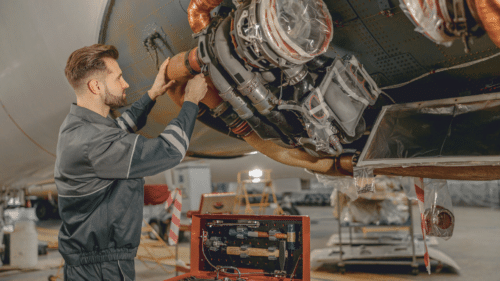The Human Factor: When Humans Make Mistakes…
Human Factors. Essentially, a complex web of cognitive, social, environmental, and personal factors which can lead to human error. The key to enhancing flight safety is to recognise, address, and counter these factors.
Because if we want our pilots, cabin crew, or maintenance staff to navigate the skies or the hangar safely, we must understand the effects of human factors.
Think, Communicate, Act
In simple terms, human factors refer to the various ways in which our ability, behaviour, or external factors can affect our daily tasks, decision-making, and interactions with others. More specifically, human factors can manifest in our mindset, interpersonal communication, and in the way we handle stress.
Since human factors can significantly influence flight safety and overall performance, it is crucial to learn how we can mitigate or even limit the risks associated with these factors.
In other words, we must learn how a multitude of factors influences how we think, communicate, and act.
Closely Related to Human Error
Unfortunately, human error is part of the job description when flying as a pilot, working as a cabin crew, or making sure that the beautiful birds are ready to be towed out of the hangar.
Despite increased focus on training within human factors and safety management, human error remains the number one cause of aviation-related accidents. Both in air and on the ground.
There is no doubt that advanced technology has contributed to fewer accidents over the years. However, the technological evolution and the increase in complexity in technology and aircraft systems, have caused the role of the human being to change. Therefore, training in human factors will remain a pivotal element in limiting human errors in the operational environment.
Let us look into the connection between human factors and human errors:
1. Cognitive overload – Aviation professionals must often deal with excessive amounts of information, increasing the risk of misjudgements and fatigue. Especially in critical situations.
2. Misconceptions and language barriers – Effective communication is key in aviation. However, factors such as language barriers, a different jargon, or interpersonal issues can strain the communication, leading to misunderstandings and misinterpretations.
3. Fly, sleep, repeat – Long working hours, different time zones, and a high-pressure work environment contribute to fatigue and stress. Conditions which impair decision-making skills, critical thinking, and reaction times.
4. Business as usual – Experienced aviation professionals are at risk of becoming complacent, when they assume that routine tasks require less attention. Overconfidence is often the cause of errors.
What Can We Do?
While we can never get rid of the human factors or ensure an error-free work environment, organisations can invest in proactive measures. One factor, in particular, is crucial to mitigating the impact of human factors and reducing the risk of human errors:
Training and education.
It is that simple. If organisations incorporate a continuous focus on human factors in their training programmes, it becomes easier for their employees to identify, recognise, and manage these factors in the operational environment. Where lives are at stake. Every day.
There are a number of ways in which organisations can conduct training. One effective training approach, however, involves the application of Active Learning. But how does that work?
The MAYDAY Active Learning Tools are a collection of training supplements which focus on the training of non-technical skills within Crew Resource Management and Human Factors. The tools train and enhance skills in effective teamwork, communication, and decision-making. This contributes to safer and more efficient operations as the crew’s or staff’s knowledge, skills, competence, and attitude increasingly match the demands they face in their jobs.
Finally, Safety Management is closely related to the field of human factors. Organisations that take reporting and training seriously have a greater chance of promoting a strong safety culture in which open reporting and learning from mistakes is encouraged. This ensures that hazards, incidents, and near misses lay the groundwork for future preventive measures.
We cannot completely eradicate human errors or remove the factors that influence pilots, cabin crew, and maintenance staff.
But we can devote enough time and resources to ensure quality training and education. On all levels of the organisation.



